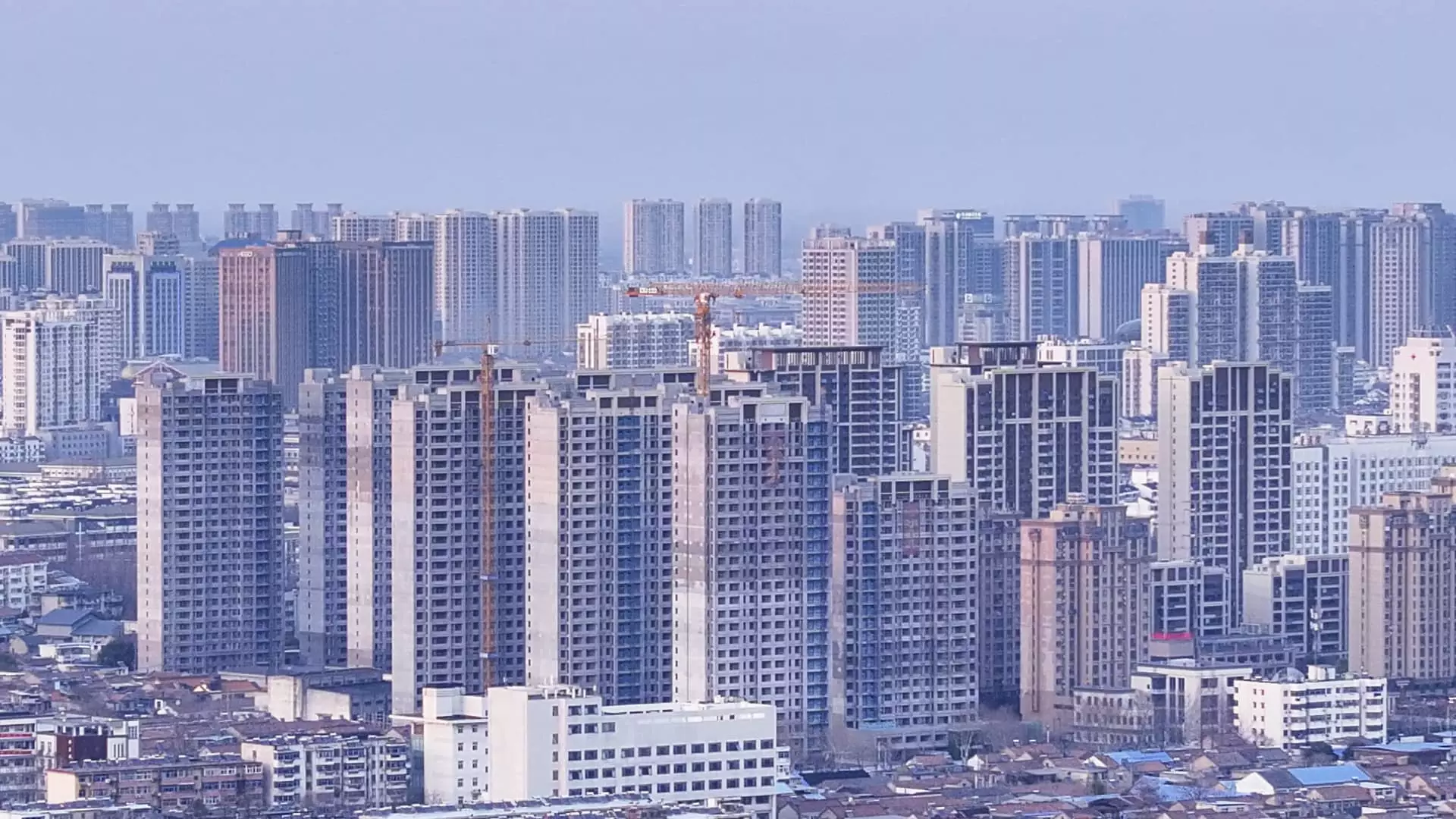In the fluctuating landscape of global economics, the peculiar circumstances of China’s real estate market have drawn attention from analysts and investors alike. Despite some analysts raising their forecasts about the market’s potential stabilization, it’s crucial to dissect whether these optimistic predictions are rooted in reality or are mere surface-level observations. The expectation for a rebound stems from reports indicating minor improvements in property sales, yet this optimism may be steering us toward complacency in light of deeper systemic issues.
The Illusion of Improvement
Current reports depict a scenario where existing home sales in major Chinese cities have reportedly increased by over 30% year-on-year. However, this spike must be viewed through a critical lens. This categorization as “secondary home sales” might suggest a revival, but it also reflects the grim reality of the primary market’s collapse. Selling existing homes does not equate to constructing new ones; it simply signals that buyers are opting for previously occupied properties due to a lack of confidence—and possibly financial means—to invest in new developments. Moreover, if we rewind to 2020, the onset of the property market decline was swift, catalyzed by stringent regulations targeting companies heavily reliant on debt. This context indicates that any perceived recovery is fragile at best.
Repercussions of a Liquidity Crisis
China’s real estate market is intertwined with the nation’s broader economic pulse, accounting for a substantial portion of household wealth. A crucial point to scrutinize is the escalating financial anxiety projected onto the average citizen as developers continue defaulting on their debts. The series of defaults are not isolated incidents but rather symptomatic of a much larger liquidity crisis gripping the industry. Analysts continuously postulate a turnaround through government intervention; however, we must ask how effective this has truly been. The market may very well be stagnating in a limbo, held together by superficial government reassurances rather than genuine, grassroots financial stability.
Government Policies: A Double-Edged Sword
The Chinese government has introduced a slew of policies over the years in a bid to prop up the declining market. However, these actions, partly an effort to recuperate the economy, seem to resemble band-aids on a gaping wound. While some believe that the latest stimulus measures could stabilize the decline by early 2026, many are left wondering who truly benefits from these interventions. A recent report by international analysts suggests that while secondary transactions may rebound, the developers themselves often miss out; their revenue streams traditionally derived from new constructions rather than existing properties. This fundamental flaw in policy planning fails to address the core issues developers face.
Foreign Investment: A Boon or a Band-Aid?
The engagement of foreign capital into China’s real estate sector has often been cited as a positive step. Investments from entities like Singaporean firms indicate an appetite for risk; however, this participation seems to signal a preference for secured, pre-defined investment strategies rather than a robust belief in China’s economic resurgence. Additionally, partnerships formed for rental housing developments could create temporary relief but neglect the actual demand for home ownership among Chinese citizens, leaving unaddressed the broader socioeconomic struggles within the nation.
Consumer Confidence: The Crux of Recovery
Amid the dizzying reforms and financial influxes, one major element remains untouched: consumer confidence. The mood reflects profound caution, shaped by persistent economic uncertainty and a decline in property values. Individuals are hesitating to leap back into homebuying; many doubt the sustainability of the current trajectory. As highlighted by market analysts, the recovery isn’t merely a matter of policy tweaks or financial injections—it’s intrinsically tied to how the average consumer perceives safety and value in the property market. Simply stated, a market fueled by fear will not thrive.
The Hard Truth: A Cautionary Path Ahead
While emerging signals suggest that the property market may be inching back to life, they remain overshadowed by systemic vulnerabilities. As John Lam from UBS notes, the “positive signals” might not universally characterize the Chinese market; instead, they may simply point to isolated occurrences of resilience. With ever-present debt rhythms underscoring the narrative and the shadow of impending optimisms, it’s essential to remain vigilant. The market’s revival, if it occurs, may be a long and arduous journey, reflecting broader economic dynamics rather than mere statistical anomalies. Investors and stakeholders must temper their expectations with reality, recognising that true stability hinges on the market’s ability to address foundational issues rather than joyful predictions of recovery.

